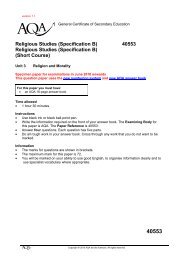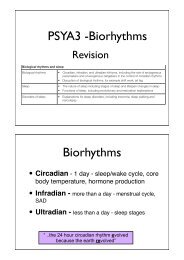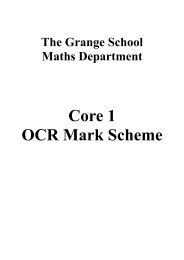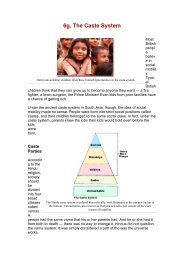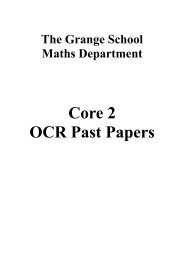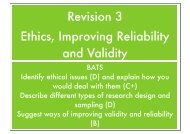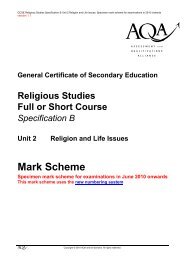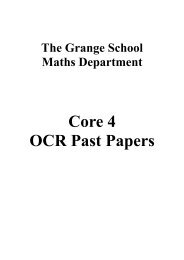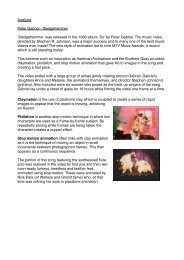Core 3 OCR Past Papers - The Grange School Blogs
Core 3 OCR Past Papers - The Grange School Blogs
Core 3 OCR Past Papers - The Grange School Blogs
You also want an ePaper? Increase the reach of your titles
YUMPU automatically turns print PDFs into web optimized ePapers that Google loves.
June 2006<br />
4<br />
8 (i) Express 5 cos x + 12 sin x in the form R cos(x − α), whereR > 0and0 ◦ < α < 90 ◦ . [3]<br />
(ii) Hence give details of a pair of transformations which transforms the curve y = cos x to the curve<br />
y = 5cosx + 12 sin x. [3]<br />
(iii) Solve, for 0 ◦ < x < 360 ◦ , the equation 5 cos x + 12 sin x = 2, giving your answers correct to the<br />
nearest 0.1 ◦ . [5]<br />
9<br />
<strong>The</strong> diagram shows the curve with equation y = 2ln(x − 1). <strong>The</strong> point P has coordinates (0, p). <strong>The</strong><br />
region R, shaded in the diagram, is bounded by the curve and the lines x = 0, y = 0andy = p. <strong>The</strong><br />
units on the axes are centimetres. <strong>The</strong> region R is rotated completely about the y-axis to form a solid.<br />
(i) Show that the volume, V cm 3 , of the solid is given by<br />
V = π(e p + 4e 1 2 p + p − 5). [8]<br />
(ii) It is given that the point P is moving in the positive direction along the y-axis at a constant rate<br />
of 0.2 cm min −1 . Find the rate at which the volume of the solid is increasing at the instant when<br />
p = 4, giving your answer correct to 2 significant figures. [5]<br />
4723/S06



